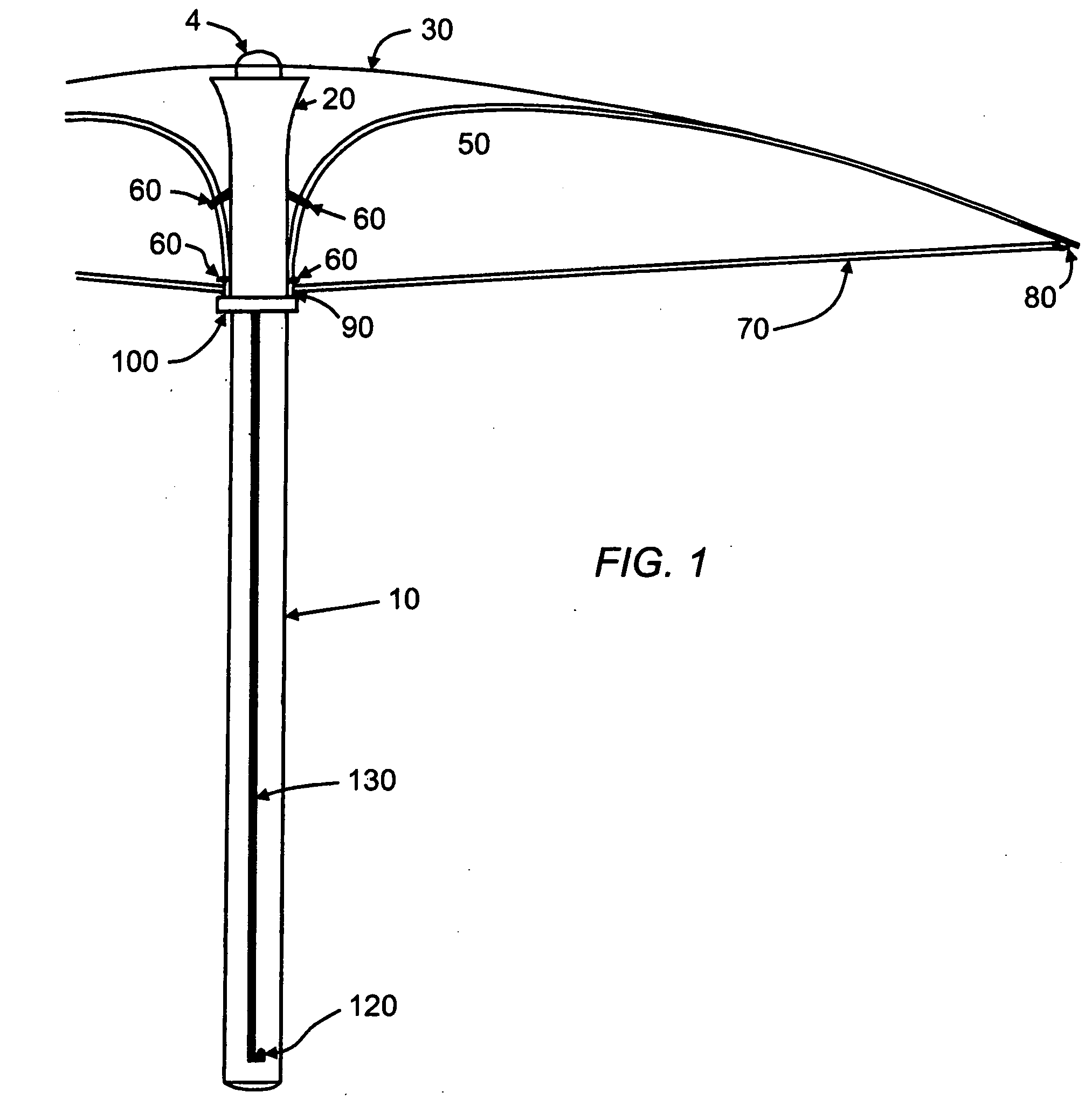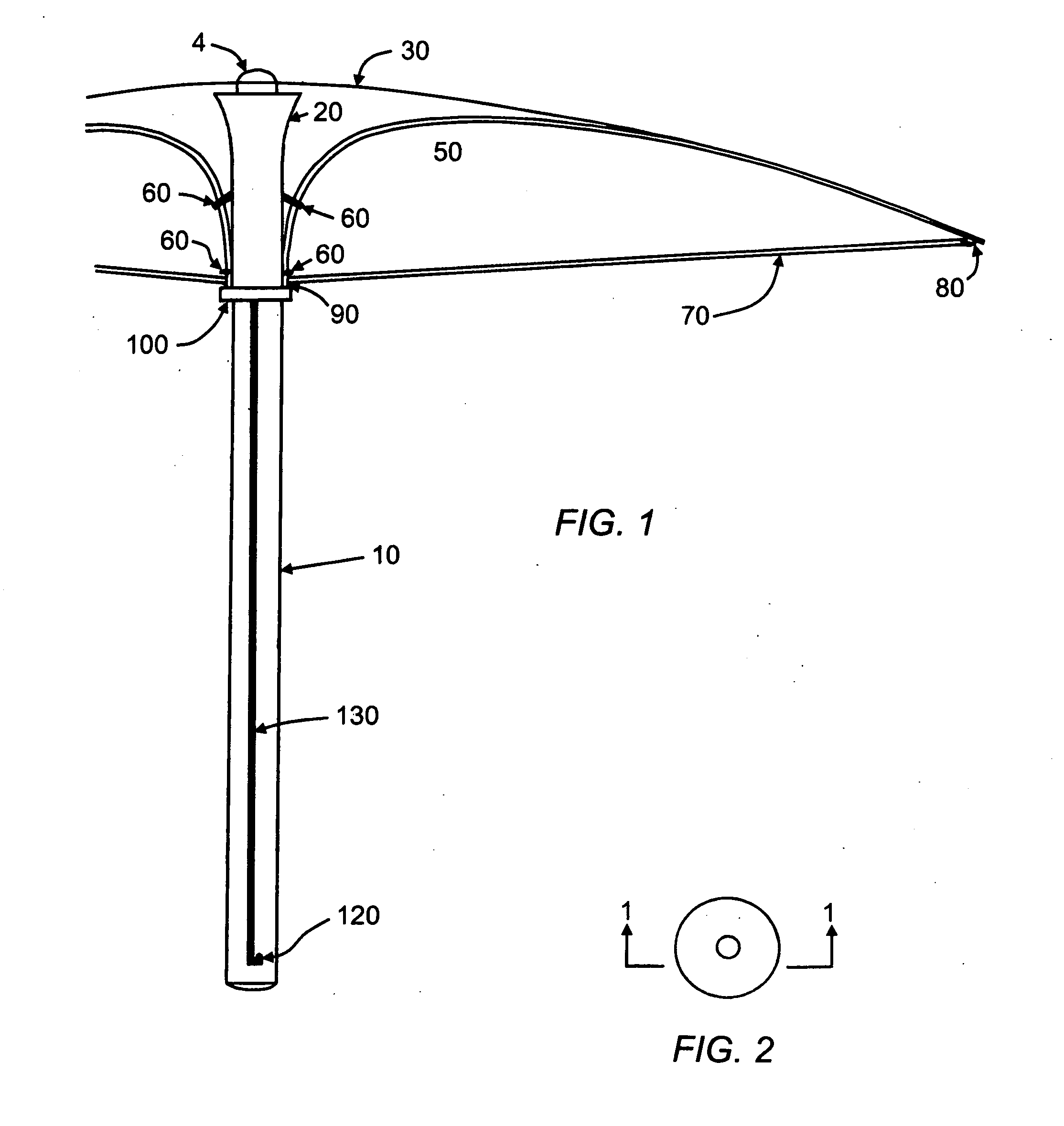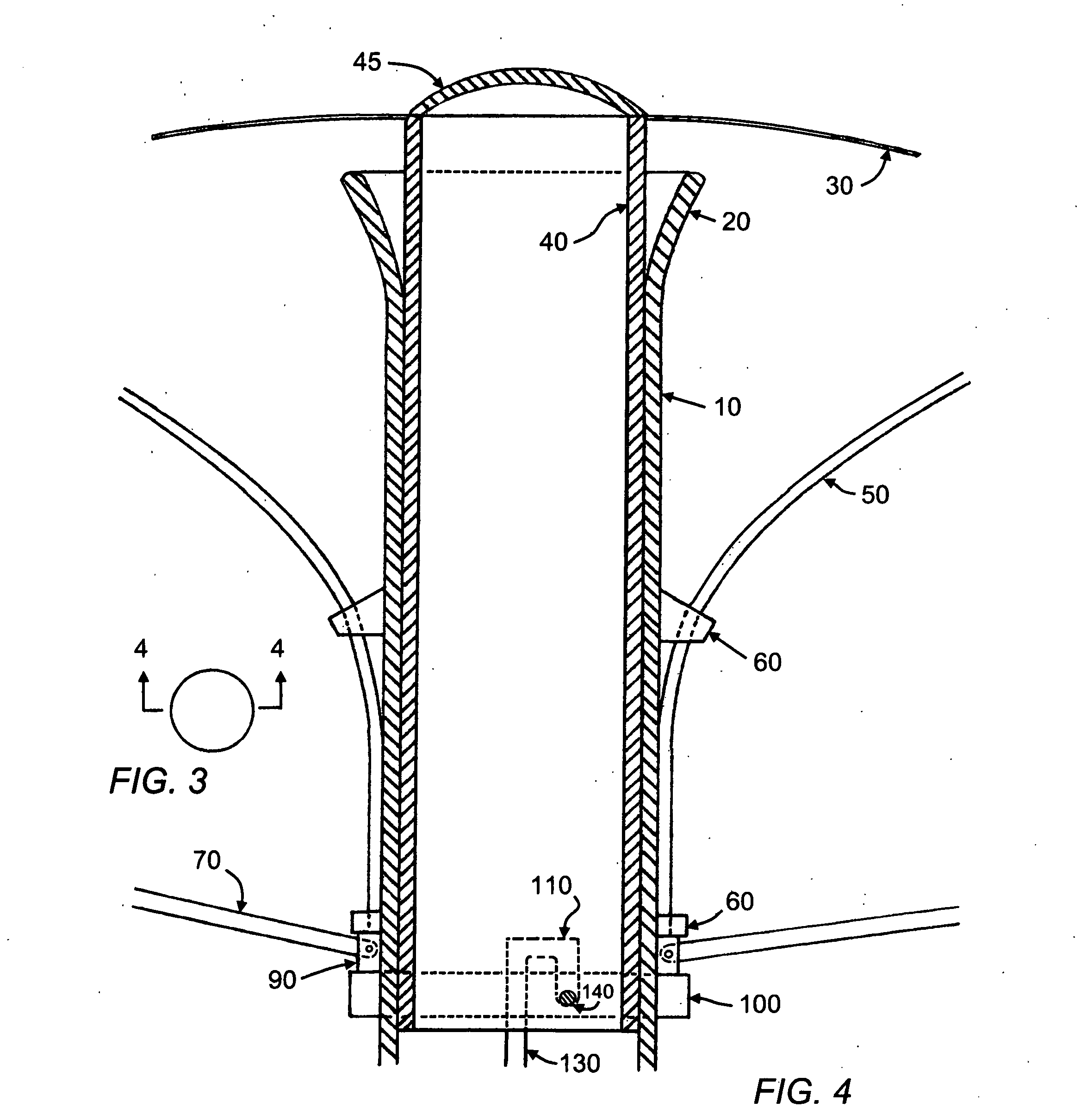Umbrella system with support for internal storage of cover and external sliding ribs and stretchers
a technology of internal storage and umbrella, which is applied in the direction of umbrellas, traveling accessories, apparel, etc., can solve the problems of cumbersome sequence of manual operations required, fragile structural elements of many handheld umbrellas remaining vulnerable to wind damage, and innate disadvantages, so as to reduce potential electrical danger, and reduce the risk of damag
- Summary
- Abstract
- Description
- Claims
- Application Information
AI Technical Summary
Benefits of technology
Problems solved by technology
Method used
Image
Examples
Embodiment Construction
LIST OF REFERENCE NUMERALS UTILIZED IN THE DRAWING
[0074]10 hollow shaft
[0075]20 upper transition element
[0076]30 cover
[0077]40 cover hub slider
[0078]45 cover-cover hub attachment devices
[0079]50 rib
[0080]60 rib collimator
[0081]70 stretcher
[0082]80 cover-rib-stretcher fastener
[0083]90 stretcher-rib slider
[0084]100 deployment slider
[0085]110 deployment slider upper fastener
[0086]120 deployment slider lower fastener
[0087]130 track slot
[0088]140 deployment slider-cover hub slider slot link
[0089]150 membrane support
[0090]160 cap
[0091]170 orifices
[0092]180 vapor permeable membrane
[0093]190 absorbant material
[0094]200 track slot gasket / internal moisture barrier
[0095]210 cover-rib tether
[0096]220 tether link
[0097]230 sleeve storage vessel
[0098]240 sleeve
[0099]250 handle cylinder
[0100]260 support elements
DETAILED DESCRIPTION OF THE INVENTION
[0101]A typical embodiment of this invention is shown on SHEET 1 / 6, FIG. 1, as an umbrella with a hollow shaft 10, providing means for containment, deplo...
PUM
 Login to View More
Login to View More Abstract
Description
Claims
Application Information
 Login to View More
Login to View More - R&D
- Intellectual Property
- Life Sciences
- Materials
- Tech Scout
- Unparalleled Data Quality
- Higher Quality Content
- 60% Fewer Hallucinations
Browse by: Latest US Patents, China's latest patents, Technical Efficacy Thesaurus, Application Domain, Technology Topic, Popular Technical Reports.
© 2025 PatSnap. All rights reserved.Legal|Privacy policy|Modern Slavery Act Transparency Statement|Sitemap|About US| Contact US: help@patsnap.com



